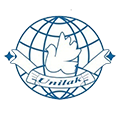Cryo-Surgery
Cryo-Surgery

What is Cryosurgery?
Cryo-Surgery (also known as cryotherapy) is a freezing technique that is often used by dermatologists to treat skin lesions. It usually involves the controlled application of a very cold liquid substance (liquid nitrogen) to a precise area of the skin for a few seconds. It is a very useful treatment for many different types of benign and pre-cancerous skin lesions and for selected types of skin cancer. Cyrotherapy works by damaging the abnormal cells in the skin lesion which then die off, allowing normal skin to recover. Depending of the size and type of the skin lesion, and the body site, freezing may be done for between 5-30 seconds with either one or two treatments per session. Many skin lesions will respond to a single treatment, although some types of skin lesion (for example viral warts), may need repeat freezing on several occasions.
Does it hurt?
The freezing spray is extremely cold, so when it is applied a sharp discomfort is quite normal. However this is usually mild and disappears to a slight ache within seconds. If the a lesion on the soles of the feet has been treated, some discomfort may occur when walking for a few days afterwards.
Are there any complications I should know about?
Cryotherapy is an extremely safe procedure. Shortly after the treatment you will notice the area becoming inflamed, in other words red and slightly swollen, perhaps with some weeping. This usually settles within a day or two. Very occasionally a blister or blood blister may form. If this does occur it can treated by carefully puncturing the blister with a sterile needle. Sometimes the treated skin may become slightly paler or darker than the surrounding skin, particularly if you have naturally pigmented skin.
What should I do after having cryotherapy?
The area treated with cryotherapy should settle and heal by itself. You do not need to apply a plaster or dressing, If the area is uncomfortable, it is sometimes helpful to take a simple painkiller such as paracetamol (2 tablets). You should wash the skin as normal. Healing usually takes 2 weeks, although occasionally may take longer.
Cryosurgery is a highly effective treatment for a broad range of benign skin problems. With appropriate instruction and supervised experience, family physicians can master the technique quickly. Cryosurgery is best suited for use in patients with light skin and for treatment of lesions in most non–hair-bearing areas of the body. Spray methods include the timed spot freeze technique, the rotary or spiral pattern, and the paintbrush method. Benign skin lesions that are suitable for freezing include actinic keratosis, solar lentigo, seborrheic keratosis, viral wart, molluscum contagiosum, and dermatofibroma. Cryosurgery requires little time and fits easily into the physician’s office schedule.
Advantages of this treatment include a short preparation time, low risk of infection, and minimal wound care. In addition, cryosurgery requires no expensive supplies or injectable anesthesia, and the patient does not have to return for suture removal. Potential side effects include bleeding, blister formation, headache, hair loss, and hypopigmentation, but rarely scarring. Skin lesions often can be treated in a single session, although some require several treatments.
Cryosurgery has been used to treat skin lesions for approximately 100 years. The first cryogens were liquid air1 and compressed carbon dioxide snow.2 Liquid nitrogen became available in the 1940s and currently is the most widely used cryogen.

Mole, cyst, wart, and skin tag removal
If you have a skin lesion such as a mole, cyst, wart or skin tag and would like it removed, it is usually a very simple procedure. You may want to take this step now because you have noticed changes in shape or colour, or it may be unsightly, painful or restricting your movement. You might have just become fed up with it, and decided it’s time to deal with it.
Most lesions are removed using a scalpel under local anaesthetic, which means you will be awake, but the area will be completely numb. Other techniques include applying chemical treatments or freezing the skin. Sometimes a laser is used to destroy the lesion while skin tags may be simply snipped off with surgical scissors.
With Cryo-Surgery removing a skin lesion is usually a quick and straightforward procedure and is most often performed with a specially designed euipment.
As with any cosmetic procedure, it is important that you review your expectations thoroughly before you decide to proceed. Doctor will explain the results you can expect, and will discuss the associated risks and alternatives to the procedure before going ahead.

